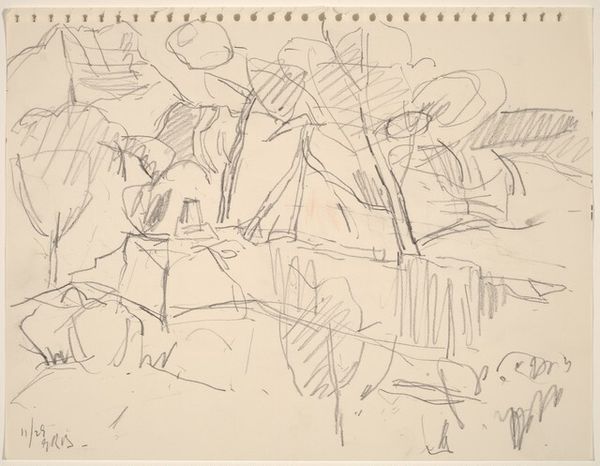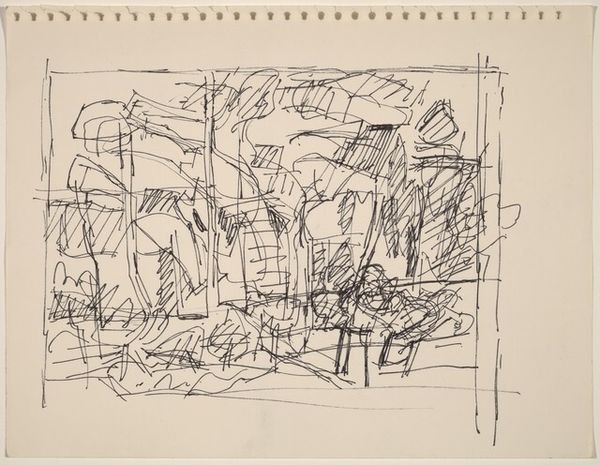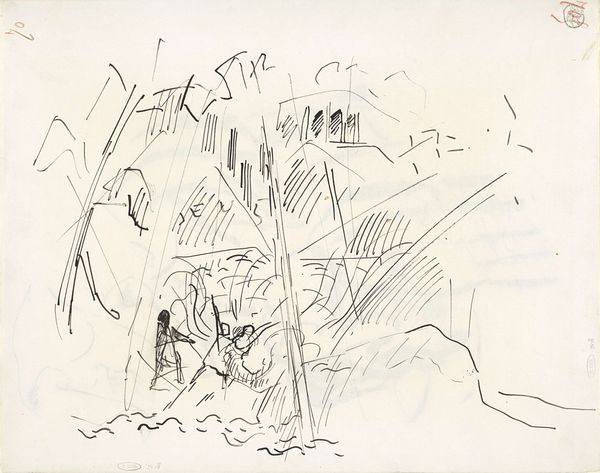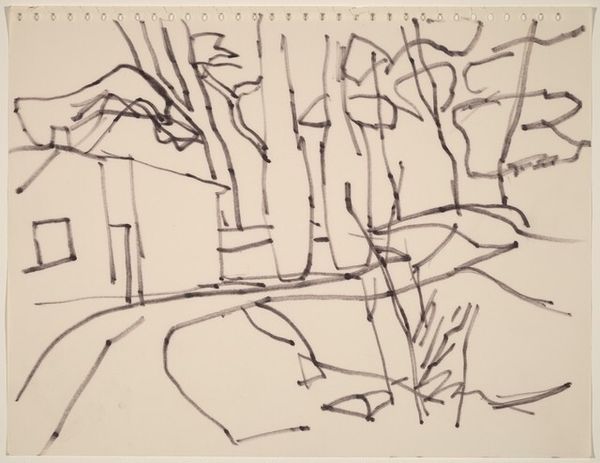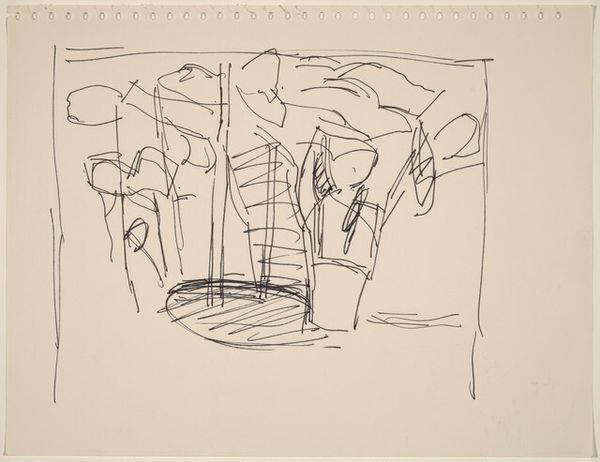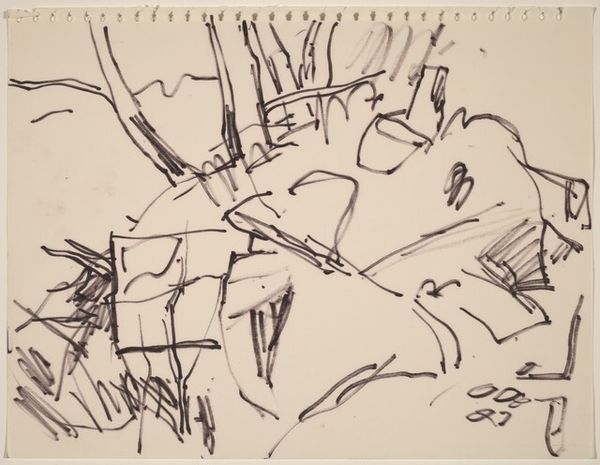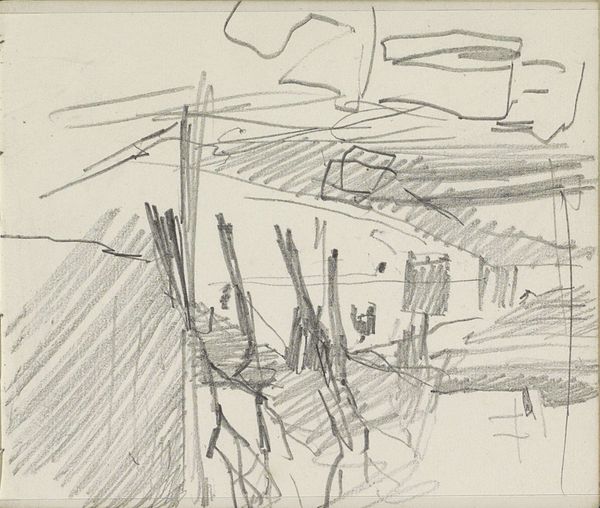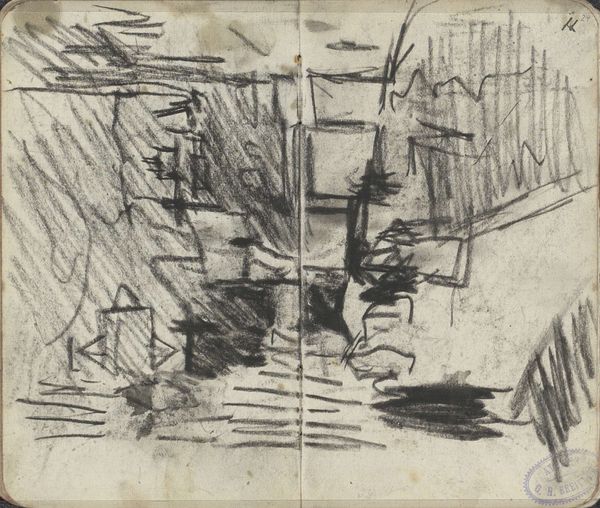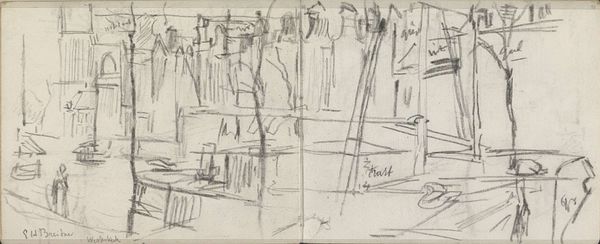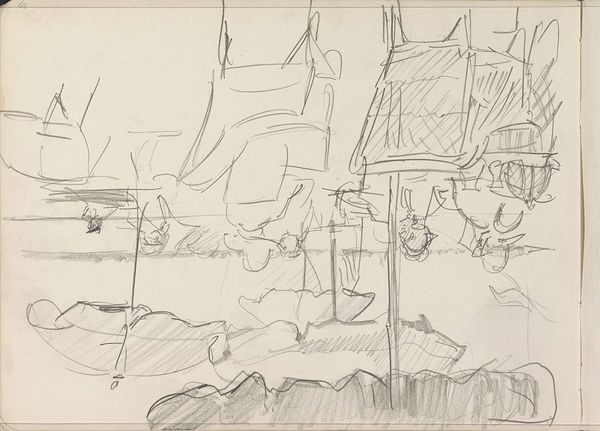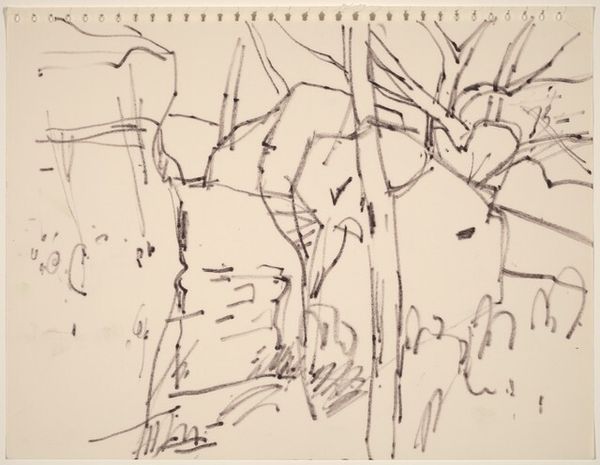
drawing, ink, pen
#
abstract-expressionism
#
drawing
#
ink drawing
#
pen drawing
#
pen sketch
#
ink line art
#
personal sketchbook
#
ink
#
ink drawing experimentation
#
pen-ink sketch
#
abstraction
#
line
#
pen work
#
sketchbook drawing
#
pen
#
sketchbook art
Dimensions: sheet: 21.4 x 27.8 cm (8 7/16 x 10 15/16 in.)
Copyright: National Gallery of Art: CC0 1.0
Editor: This is an Untitled pen and ink drawing by George Bunker, created around 1969. It looks like a quick sketch, but I'm drawn to the artist's use of line. What can you tell me about how this work reflects its time? Curator: Considering this was made in 1969, towards the end of the Abstract Expressionist movement, the immediate question becomes, what is Bunker expressing, or perhaps obscuring, through this seemingly spontaneous abstraction? Are we looking at a rejection of earlier societal structures, mirrored in the disintegration of form? Editor: So, the lack of clear form could be a kind of statement? Curator: Absolutely. Think about the context of the late 60s: Civil Rights Movement, anti-war protests, evolving gender roles. Could this apparent chaos reflect the societal upheaval and the questioning of established norms? Look at the confined space, and the contrast between dense cross-hatching and open areas – is that a metaphor for restricted freedoms versus the desire for liberation? Editor: That's a compelling thought. The way he contains the chaos within a defined rectangle on the page does seem to set up some tensions. Curator: It’s a microcosm of the broader social struggles of that period. What stories are told here through composition and line? The pen is like a seismograph of an anxious generation. How does this resonate with your own understanding of contemporary anxieties reflected in art? Editor: I guess I see parallels in today's art that grapples with climate change and political polarization; artists seem to use abstraction to convey similar feelings of uncertainty and fear. Curator: Exactly! Art continually refracts our lived experience, so consider this historical context when exploring today’s works. Editor: It’s amazing to see how a simple sketch can speak volumes about its era and continue to spark dialogue across generations. Curator: Indeed. It invites us to see art as a form of visual commentary, forever in conversation with the world it inhabits.
Comments
No comments
Be the first to comment and join the conversation on the ultimate creative platform.
